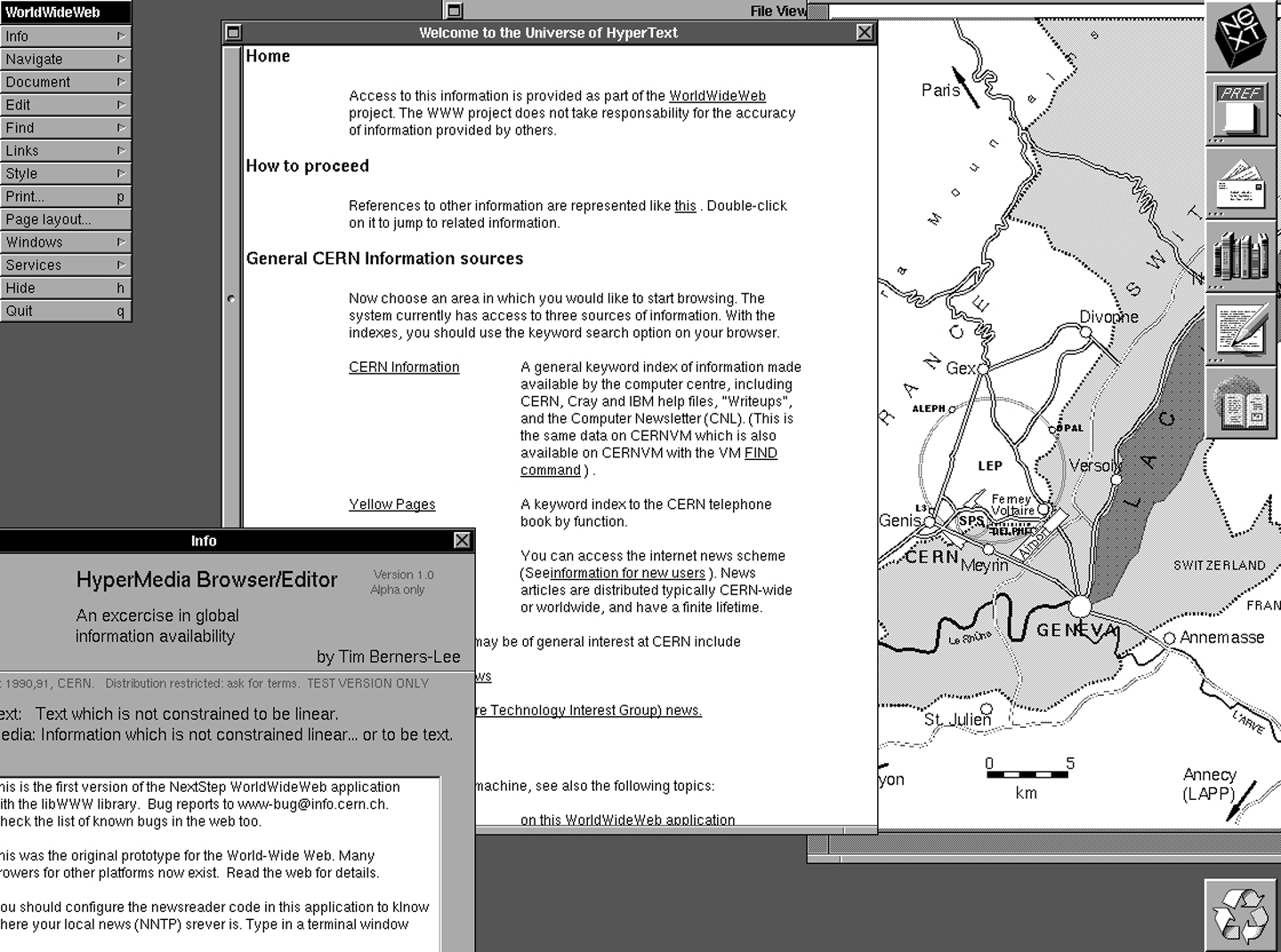A very short history of hypermedia
Heinz Wittenbrink
2017-11-27

Hypermedia is defined by the presence of application control information embedded within, or as a layer above, the presentation of information. (Fielding, 2000)
Distributed hypermedia allows the presentation and control information to be stored at remote locations. (Fielding, 2000)
The concept of linked information
Vannevar Bush: Memex

Bild: Wikimedia Commons This image is a work of the United States Department of the Treasury, taken or made as part of an employee's official duties. As a work of the U.S. federal government, the image is in the public domain in the United States.

All this is conventional, except for the projection forward of present-day mechanisms and gadgetry. It affords an immediate step, however, to associative indexing, the basic idea of which is a provision whereby any item may be caused at will to select immediately and automatically another. ... The process of tying two items together is the important thing.
J.C.R. Licklider
The hope is that, in not too many years, human brains and computing machines will be coupled together very tightly, and that the resulting partnership will think as no human brain has ever thought and process data in a way not approached by the information-handling machines we know today.(Licklider, 1960)
Ted Nelson

Bild: Gisle Hannemyr, Wikimedia Foundation. This file is licensed under the Creative Commons Attribution-Share Alike 3.0 Unported license.
- Invention of the term “Hypertext”
- Computers used to implement hypertext
- Xanadu as a hypertext system
Let me introduce the word "hypertext" to mean a body of written or pictorial material interconnected in such a complex way that it could not conveniently be presented or represented on paper. It may contain summaries, or maps of its contents and their interrelations; it may contain annotations, additions and footnotes from scholars who have examined it.(Nelson, 1965)
DigiBarn Documents: Computer Lib/Dream Machines, Ted Nelson

Bild: Stefan Münz. Rechte: Creative-Commons strong. Wenn Sie gemäß der Lizenz nutzen, geben Sie bitte stets die genaue URL-Adresse des betroffenen Inhalts an.

Doug Engelbart

- Interface elements for linked information (e.g. the mouse)
- Collaborative editing ...
HyperCard
- Hypertext system on personal computers
- Linking of images
- Search
HyTime
- Early standard for hypermedia systems
- Time based hypermedia
What is hypermedia? Hypermedia is the union of two information processing technologies: hypertext and multimedia. Hypertext information is accessed in more than one order. Multimedia information is communicated by more than one means.(Goldfarb, 1991)
The WWW
The invention of the web

Bild: Silvio Tanaka – Wikimedia Commons Creative Commons — Attribution 2.0 Generic — CC BY 2.0

- Internet as implementation of hypertext
- HTML as markup language for hypertext
- URLs for addressing resources
- HTTP as protocol for universal hypermedia
Client-Server Architecture

Early browsers

The browser wars
Bild: Wikimedia Commons Creative Commons — Attribution-ShareAlike 3.0 Unported — CC BY-SA 3.0
Web standards and the W3C
Native apps: Links
Progressive Web Apps
RDF and the semantic web
Discussion
Relevance of Open Standards
Future of Clients
References
Sources
Fielding, R. T. (2000). REST: Architectural Styles and the Design of Network-based Software Architectures (Doctoral dissertation). University of California, Irvine. Retrieved from http://www.ics.uci.edu/~fielding/pubs/dissertation/top.htm
Goldfarb, C. F. (1991). Standards: HyTime: A standard for structured hypermedia interchange. Computer, 24(8), 81–84.
Licklider, J. C. R. (1960). Man-Computer Symbiosis. IRE Transactions on Human Factors in Electronics, HFE-1, 4–11. Retrieved from http://groups.csail.mit.edu/medg/people/psz/Licklider.html
Nelson, T. H. (1965). Complex Information Processing: A File Structure for the Complex, the Changing and the Indeterminate. In Proceedings of the 1965 20th National Conference (pp. 84–100). Cleveland, Ohio, USA: ACM. https://doi.org/10.1145/800197.806036


